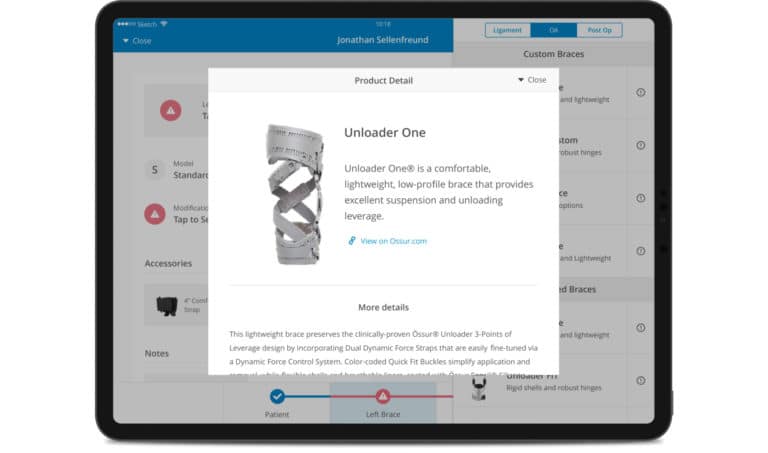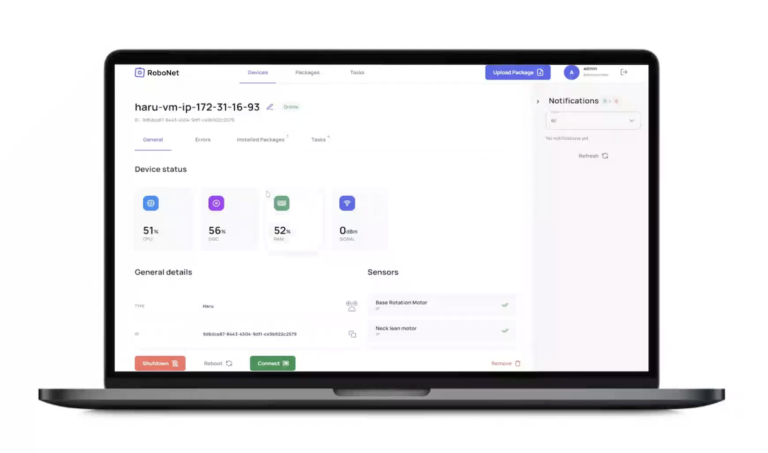IT Vendor Management: What It Is and How to Get It Right
Nearly 35% of companies work with more than 1,000 third parties, while almost half of those work with over 10,000 third parties. Effective IT vendor management is crucial for mitigating risks and controlling service quality. This is especially relevant in the IT industry, where outsourcing is a common business practice.

Backed by more than 200 satisfied clients and numerous industry awards, Relevant knows how IT vendor management can help companies get the most from relationships with their partners.
200+ companies from 25 countries outsourced software development to Relevant
We provide companies with senior tech talent and product development expertise to build world-class software. Let's talk about how we can help you.
Contact usIn this article, we’ll guide you through:
- The basics of IT vendor management
- The benefits and challenges of IT vendor management
- The secrets and stages of an effective vendor management process
So let’s get started!
Table of Contents
IT vendor management: The basics
IT vendor management is an umbrella term for the processes and systems organizations use to manage their IT suppliers in order to get the most from their partnerships. This is not just limited to cost control. In general, an IT vendor management framework covers the following five aspects:

- Vendor selection: choosing vendors according to the organization’s goals and long-term strategy
- Contract management: negotiating terms and conditions that will work for both the organization and its vendors
- Vendor performance monitoring: tracking selected metrics and KPIs to ensure service excellence
- Relationship management: establishing successful partnerships that result in effective communication and collaboration
- Risk management: mitigating potential risks such as data breaches
Vendor management usually refers to policies, processes, and procedures, but sometimes it can also mean technology solutions. IT vendor management software centralizes vendor information and streamlines communication and reporting. It can also automate routine tasks such as billing and order distribution.
Most companies today face difficulties dealing with their IT vendors because of rapid industry growth and fast-changing data security regulations. As a result, an effective IT vendor management process is becoming more important than ever.
Let’s take a closer look at what you stand to gain from streamlined vendor management.
The advantages of a well-thought vendor management process
You’ve probably already had to deal with multiple vendors, so you know how difficult it can be to control their compliance with your requirements and the quality of their services. However, proper vendor management can help you overcome these challenges. Here’s how.

It improves vendor selection
With good vendor management, you can find vendors that match your company’s strategic goals and vision, not just your project objectives. In the long run, an effective management process helps you avoid interruptions in vendor sourcing and save time.
It strengthens your relationships with vendors
Better vendor selection increases your chances of establishing long-term partnerships and building trust. A win-win approach is at the heart of an effective IT vendor management strategy.
It saves you money
Strong relationships with vendors allow you to negotiate better rates. What’s more, successful long-term partnerships are more cost-effective than switching vendors for short-term gains.
It improves performance management
With an established vendor management process, you have a comprehensive view of the vendor’s performance and KPIs. A good strategy makes your requirements and expectations more consistent, which in turn helps your vendors give you better results.
It reduces risk
The vendor management process includes policies and procedures for risk management and mitigation. These help you protect your confidential company data, reduce the risk of delivery failure or supply chain disruption, and establish emergency plans.
In summary, IT vendor management brings many benefits to the table. But before we move on, let’s explore how it differs from IT vendor procurement, which is another term that you might hear in a similar context.
IT vendor procurement vs. strategic IT vendor management: What’s the difference?
Vendor management is traditionally a part of the procurement process, where it has an operational function. IT vendor procurement addresses two main concerns that companies usually have when sourcing vendors—risk and cost. Procurement specialists often chase the lowest-cost providers and focus on contract negotiations to ensure that terms and conditions protect the company’s interests.
But focusing on sourcing IT vendors with the cheapest rates is no longer an effective strategy for many businesses. In most cases, companies need to take a more agile approach, so vendor management has evolved into a new discipline, often referred to as strategic vendor management, to avoid confusion.
In contrast to procurement, the strategic vendor management process aims to mitigate risks and reduce costs by building effective and sustainable relationships with third parties. Vendor management specialists ensure that vendors follow industry best practices, adhere to company policies and standards, and comply with security and other regulations.
For the IT industry, where multi-year outsourcing contracts are commonplace, strategic and agile vendor management may sound like the perfect solution to outsourcing problems.
So why does the failure rate of IT outsourcing remain so high?
The challenges of vendor management in IT
Even with an IT vendor management strategy in place, companies still have challenges to deal with. Here are three of the biggest.

An ineffective contract process
Contract negotiation is traditionally carried out by procurement specialists. Instead of thinking agile, they tend to draw up unrealistic and rigid contracts which over-prioritize cost savings.
Moreover, teams and departments involved in the contract process often lack experience and IT contract knowledge, which leads to inefficiencies and discrepancies in negotiations. As a result, contracts fail to account for fast-changing needs, and companies can end up locked into agreements or stuck with outdated technologies and practices.
Inaccurate expectations
You want vendors to perform according to your expectations—who doesn’t? Unfortunately, in real life, not all of them deliver what you want. Some typical reasons are inadequate vendor assessment, ambiguities, and ineffective communication.
If you outsource software development, take care to perform due diligence and test your suppliers in advance. For example, you can give them a small development task to check their service quality and level of cooperation.
Standardized criteria and requirements, measurable performance indicators, and effective communication throughout the entire vendor management lifecycle will go a long way to helping you avoid ambiguities and achieve better IT vendor governance.
A lack of involvement
When business and senior management don’t understand the importance of strategic vendor management, they’re unlikely to allocate the right resources and budget to the process. On top of this, vendor control becomes uncoordinated when there’s no centralized IT vendor management policy that is supported by all departments.
Organizations with a large supplier base may find it challenging to establish an effective IT vendor management process and get a global view of all the vendors they work with. But it’s not impossible if you have a few simple strategies under your belt.
Let’s discuss how you can make your vendor management more effective.
The secrets of an effective IT vendor management process
Following IT vendor management best practices can help you overcome challenges and streamline your vendor processes. Here are our top tips for beating the odds.
Focus on long-term partnerships
We’ve mentioned that long-term partnerships strengthen relationships with your vendors and save you money in the long run. You can also expect better trust, lower rates, and even access to insider knowledge. Finally, you have a better chance of maintaining service quality, which is a challenge for companies that regularly switch vendors.
Create win-win relationships
Good relationships benefit both you and your vendors. Instead of focusing on particular projects, consider your vendor as a partner with a common end goal. Define responsibilities, set quantifiable goals, and establish effective communication between your teams.
Trust your vendors’ expertise
Allow your vendors to help you with strategic planning. For example, let your dedicated development team participate in product planning. They may be able to find a better technical solution to your problem or point out system weaknesses that you need to address.
Looking for a reliable software development vendor that can advise you on all tech aspects of your project? Contact us!
These three tips will help you improve your vendor management once you have an IT vendor management process in place. If you’re not there yet, let’s talk about how to get started in more detail.
How to set up an effective IT vendor management process
The IT vendor management process essentially involves two activities:
- Selecting vendors according to your business goals and strategy
- Managing vendor relationships to maintain high performance and mitigate risks
In practice, these include things such as establishing supplier policy, categorizing suppliers and assessing their risks, drawing up contracts, tracking supplier performance, and reporting.
Here are ten stages to setting up an effective IT vendor management process that covers all of these.
1. Build a vendor management strategy
Your IT vendor management strategy should align with your business needs and vision. This is why your first step to better vendor management is to determine your main focus—whether it’s safety, cost, innovations, service quality, or something else—alongside other factors such as user requirements and market trends.
2. Define your vendor selection criteria and write a bid document
Opt for vendors that pair well with your business values and strategy rather than just fulfilling your project requirements.
Once you’ve decided on your criteria, write a bid document to formalize the process. This document will include checklists, RFI questions to ask vendors, business requirements or problems that the vendor will need to solve, and more.
3. Find your vendors
Once the criteria are set, it’s time to find your vendors. Here’s a short description of what you need to do:

- Prepare your project specifications, including the type of application, platforms, tech stack, estimated deadlines, and other requirements.
- Search for vendor candidates with experience in similar projects and assess their websites, customer reviews, employee feedback, and professional awards.
- Contact candidate firms and get information on their rates, expertise, certifications, security measures, and whether they’re able to take on your project.
- Discuss your project with selected candidates in detail and ask them to provide estimates of both cost and delivery time.
- Test the candidate by offering them a task such as developing a feature that may become a part of your project.
It’s also a good idea to ask for references from previous clients or check feedback on their performance.
4. Categorize your vendors and contracts
Consider categorizing your vendors depending on their type, impact, and service. This will help you determine how much time and effort you should give to each relationship during the vendor management lifecycle. For example, you can group vendors based on who manages them:
- Strategic vendors governed by senior managers
- Tactical vendors governed by middle managers
- Executive vendors governed by execution managers, and so on
5. Negotiate contract terms
Instead of strict terms and conditions that protect only your interests, embrace an approach that delivers mutual benefits. This doesn’t mean your agreement has to be shallow. Along with covering the basics such as cost, services, and project duration, pay attention to confidentiality and non-compete clauses.
6. Onboard your vendors
Gather together all the information and documents you’ll need for vendor onboarding, such as payment information, licenses, tax forms, and insurance details. Make sure that you’ll be able to fully pay your vendors. Also, assign managers to work with the vendors, and inform other departments how the new contract will affect them.
7. Manage your vendor relationships
Aim to be a good client. Try to understand your vendors’ business processes and needs just as you want them to understand yours, and be ready to share information with them. This doesn’t mean sharing unnecessary confidential data but instead delivering important information (such as launch dates and changes in product plans) when the vendor needs it.
8. Monitor vendor performance
Define the IT vendor management metrics you’ll track, such as customer service level, delivery dates, and service quality. Along with setting KPIs, schedule regular meetings with your vendors to discuss project progress and share feedback rather than just discussing problems.
9. Manage risks
IT vendor risk management starts at the vendor selection stage. Monitor every candidate for potential risks, including regulation compliance, previous lawsuits, data security issues, and intellectual property loss. Create an emergency plan and clarify the responsibilities of each party if particular problems arise.
10. Be ready for the future
Manage vendors while focusing on the bigger picture. As far as possible, make allowances for future events— for example, if you plan to spin off a division, mention in your contract that you can transfer licenses at the same price. This will allow you to remain flexible and avoid getting locked into one vendor and outdated technologies.

Wrapping up
Selecting vendors and managing relationships with them can be challenging. So opt for partners like Relevant that know how a well-established IT vendor management process looks like and understand its importance.
More than 200 clients worldwide and a 9/10 client satisfaction score prove that Relevant knows the drill. Contact us today for a consultation or to learn more about our working process!
FAQs
Your Next Read
Our core services:
Do you want a price estimate for your project?
Do you know that we helped 200+ companies build web/mobile apps and scale dev teams?
Let's talk about your engineering needs.
Write to us











